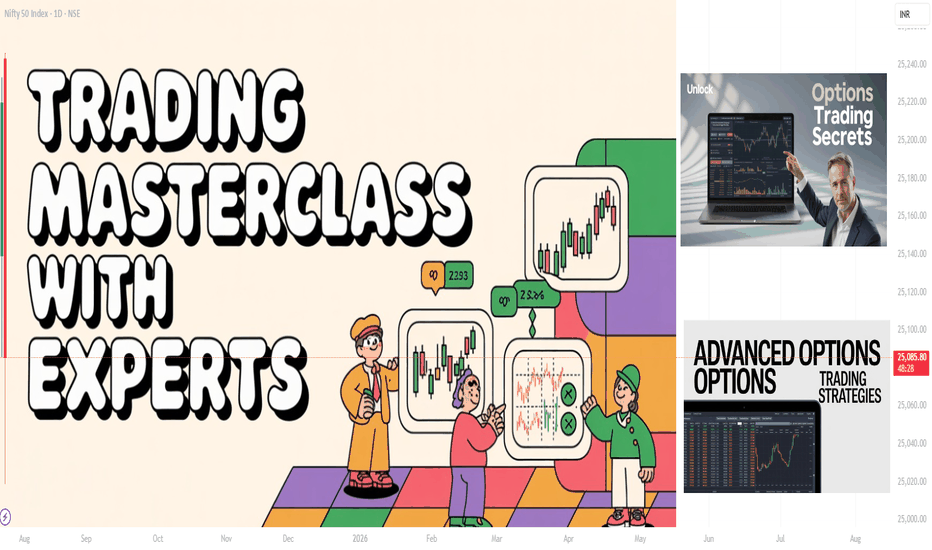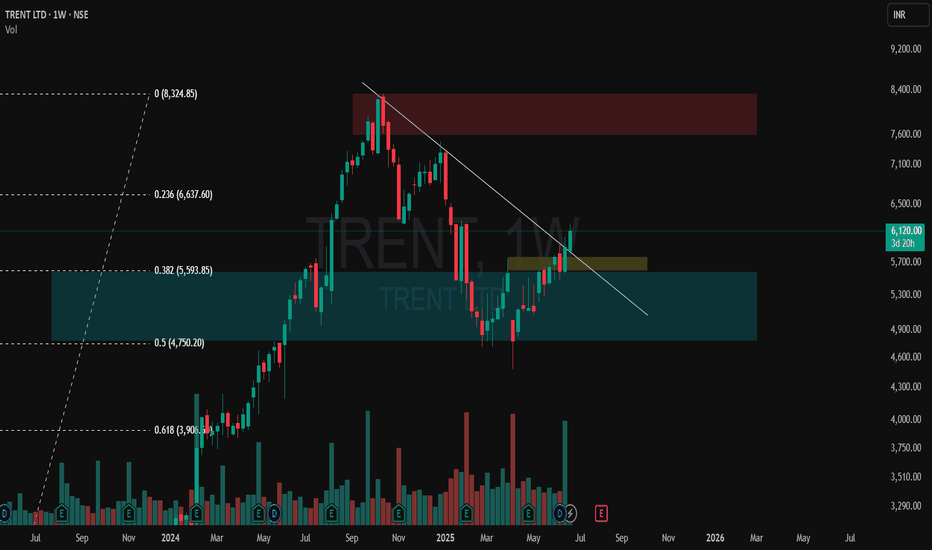Learn Institutional Trading📌 What is Institutional Trading?
Institutional trading refers to trading done by large financial organizations like:
Hedge Funds
Mutual Funds
Foreign Institutional Investors (FIIs)
Domestic Institutional Investors (DIIs)
Insurance Companies
Proprietary Trading Firms (Prop Desks)
Investment Banks
🧭 Why Should You Learn Institutional Trading?
Most retail traders:
Enter trades based on emotions or random indicators
Chase price or react late
Trade without understanding who controls the market
But institutions:
Trade with logic, precision, patience, and volume
Follow clear rules based on liquidity, risk, and timing
Use data-driven strategies and structure-based entries
Learning institutional trading means:
✅ You no longer follow retail traps
✅ You align your trade with the market’s real direction
✅ You understand where and why price truly moves
🧱 Key Concepts to Learn in Institutional Trading
1. Market Structure (MS)
Institutional traders analyze price based on structure, not indicators.
They study:
Higher Highs / Higher Lows (HH/HL)
Lower Highs / Lower Lows (LH/LL)
Break of Structure (BOS)
Change of Character (CHOCH)
💡 Pro Tip: Price never moves randomly — it follows structure. Learning how price breaks previous structure shows when the trend is shifting.
2. Liquidity & Smart Money Concepts
Institutions need liquidity to place big orders. So, they look for:
Retail stop-loss zones
Breakout traders’ entries
Obvious support/resistance
Then, they:
Create fake breakouts to grab liquidity
Enter in the opposite direction
Leave behind “footprints” like Order Blocks or FVGs
📌 Important Concepts:
Liquidity Pools
Inducement Zones
Order Blocks (last candle before the move)
Fair Value Gaps (FVG)
Mitigation Zones
📊 Institutions don’t chase price — they manipulate it. Learn to trade where they are entering, not where retailers are exiting.
3. Volume Analysis & Order Flow
Institutions trade with massive capital, so their footprints show up in:
Volume spikes
Imbalance between buyers/sellers
Absorption (when large orders block the market)
Rejections at key zones
🔧 Tools used:
Volume Profile
Delta Volume / Footprint Charts
VWAP (Volume Weighted Average Price)
4. Options Data & Open Interest (OI)
Institutions use option chains to trap or hedge retail participants. They track:
Open Interest Build-up (Call or Put side)
Max Pain Level (where most options lose value)
Put/Call Ratio (PCR)
Option Writers’ Zone (where institutions want expiry)
💡 Example: If 80% OI is built on 22,000CE and price is near it, chances are high that institutions will protect that zone and keep price below it.
5. Institutional Tools & Analysis
Institutions use:
Multi-Timeframe Analysis (MTA)
News + Event Flow
Economic data + earnings
Position sizing based on volatility
Algo-driven execution
Retail traders often focus only on technical indicators — institutions use a combination of fundamentals, sentiment, macroeconomics, and flow.
🧠 Skills Needed to Trade Like Institutions
Chart Reading Without Indicators
Master price action
Understand structure, CHOCH, BOS
Supply and Demand Zone Identification
Mark strong OBs (Order Blocks)
Confirm with imbalance or FVG
Liquidity Mapping
Where will retail place SL?
What’s the inducement?
Volume + OI Reading
Use OI charts to avoid traps
Match price with volume for confirmations
Emotional Discipline
Trade with confidence
Trust your setup — not noise or tips
Risk Management
Fixed % per trade (0.5% to 1%)
SL below valid structure
📈 Example of an Institutional Setup (Bank Nifty)
Structure: Market is in a strong uptrend (HH-HL forming)
Liquidity: Price dips below previous swing low — stop-hunt likely
Order Block: 15-minute bullish OB forms with FVG
Volume: Spike seen + high OI on 49,500 PE
Entry: Bullish candle close in OB
SL: Just below OB
Target: Next liquidity zone or supply area
🔁 RR Ratio: 1:3 or better
🛠️ Tools You Can Use to Learn Institutional Trading
TradingView – Charting, structure, OBs
Chartink / Trendlyne – Option OI analysis
Sensibull / Obstra / Quantsapp – Option strategy + data
Volume Profile – Spot accumulation/distribution
ForexFactory / Investing.com – Economic calendar
Smart Money YouTube / Discord / Telegram Groups – Practice setups
🧩 Step-by-Step Plan to Learn Institutional Trading
Foundation: Learn market structure + price action
Deep Dive: Understand liquidity & smart money concepts
Tools Mastery: Volume, VWAP, OI, Option Chain
Live Practice: Backtest institutional setups
Risk System: Use proper SL, position sizing, and journaling
Mindset: Stay patient and emotion-free
Repeat: Improve setup confidence & refine edge
🚀 Final Thoughts: Trade Like an Institution, Not a Retailer
If you trade based on what’s obvious — you’re likely wrong.
If you trade based on what’s behind the move — you trade like the pros.
Institutional trading is not about complexity.
It’s about thinking ahead, managing risk, and waiting for real opportunities — not noise.
Swingtrading
Technical Class🎯 What is a “Technical Class”?
A Technical Class is a structured learning session or course designed to teach technical analysis – the skill of forecasting price movement in financial markets based on charts, price patterns, indicators, volume, and historical data.
It’s one of the most essential skillsets for traders and investors, especially those involved in stock trading, intraday trading, swing trading, options, forex, or crypto.
📘 Purpose of a Technical Class
The main goal of a technical class is to train participants to:
Read and analyze price charts confidently
Use indicators and tools to generate buy/sell signals
Recognize institutional footprints and volume patterns
Make independent, logic-based trading decisions
Avoid emotional or speculative trades
🧱 What Topics Are Covered in a Technical Class?
✅ 1. Chart Reading Basics
Candlestick types (Doji, Hammer, Engulfing, Marubozu)
Price vs. Volume relationship
Support & Resistance levels
Timeframes: Intraday (5m/15m), Positional (1D/1W)
✅ 2. Price Action Trading
Trend structure: HH-HL / LH-LL sequences
Breakouts & Fakeouts
Supply-Demand zones
Liquidity traps
✅ 3. Technical Indicators
Trend Indicators: Moving Averages (SMA/EMA), MACD
Momentum Indicators: RSI, Stochastic, CCI
Volume Indicators: VWAP, OBV, Volume Profile
Volatility Indicators: Bollinger Bands, ATR
✅ 4. Chart Patterns
Continuation Patterns: Flags, Pennants, Triangles
Reversal Patterns: Head & Shoulders, Double Top/Bottom, Wedges
Range Patterns: Rectangles, Channels
✅ 5. Support & Resistance Mastery
Dynamic (Moving averages, trendlines)
Static (Horizontal S/R, Round numbers)
Institutional S/R zones with Volume & OI
✅ 6. Trend Analysis
Identifying Bullish, Bearish, and Sideways markets
Role of Volume in confirming trends
Using Dow Theory and Market Structure
✅ 7. Advanced Concepts
Divergence (Price vs. RSI/MACD)
Multi-Timeframe Analysis (MTA)
Fibonacci Retracement & Extensions
Chart psychology (why price behaves irrationally)
🧠 Skills You Gain from a Technical Class
How to time entries and exits based on confirmation
How to avoid false breakouts
When to use indicators and when to trust price action
How to combine volume + price for high-probability setups
How to align with smart money and institutional footprints
🎓 Who Should Attend a Technical Class?
✅ New traders wanting a strong foundation
✅ Intraday and swing traders aiming for consistency
✅ Investors looking to time entry/exit better
✅ Option traders who want to read chart behavior
✅ Crypto/forex traders who rely on pure price movement
📈 Real-World Applications
Identify trend reversals before they happen
Spot breakouts with volume confirmation
Align trades with institutional positioning
Reduce overtrading and increase accuracy
Make data-backed decisions, not emotional guesses
⚠️ Common Mistakes Covered in a Technical Class
❌ Overuse of indicators (indicator overload)
❌ Trading without stop-loss
❌ Misreading breakouts and breakdowns
❌ Ignoring volume and confirmation
❌ Lack of patience or plan in trade execution
🔚 Final Thoughts
A Technical Class is more than just learning chart patterns — it’s about understanding how the market thinks, how price reacts, and how you can trade in sync with logic, not emotion.
Whether you're into stocks, futures, options, or crypto — a strong technical foundation increases your edge, reduces losses, and boosts confidence.
Mastering Horizontal Breakouts: Avoid Traps with ExamplesCommon Pitfalls: Identify and avoid typical traps associated with horizontal breakouts.
Multi-Time Frame Analysis (MTFA): Learn how to apply MTFA for more accurate market predictions.
Selective Trading: Discover techniques to bypass low-probability setups and seize high-opportunity trades.
Charting Techniques: Explore adaptive charting methods with real-world examples to enhance your trading strategy.
How to Trade Parallel Channels Like a Pro | Intra & Swing TradesLearn how to trade parallel channels effectively in this detailed breakdown. I cover two types of parallel channels:
Up trending Parallel Channel – Enter at higher lows for a long position.
Downtrending Parallel Channel – Short at lower highs for intraday trades or wait for a breakout at resistance for swing/positional trades.
Master risk-reward strategies and improve your trade setups today!
Identical patterns in Godfrey Phillips and Swan EnergyI showcase two identical patterns in Godfrey Phillips and Swan Energy in this video. I had previously traded Swan Energy, and because I journal my trades, I remembered its price action when I spotted the same setup in Godfrey Phillips.
This is the power of journaling! By maintaining a trading journal, you track your profits and losses and improve your ability to recognize repeating patterns and backtest data effectively.
Do you maintain a trading journal? Let me know in the comments!
Weekly Breakout - Feb 1st Week / Best Stock To Watch Now ⚠️ Important: Always Exit the trade before any Event.
⚠️ Important: Always maintain your Risk & Reward Ratio.
✅#Boost, #Like & #Follow to never miss a new idea! ✅
Disclaimer: I am not SEBI Registered Advisor. My posts are purely for training and educational purposes.
Eat🍜 Sleep😴 TradingView📈 Repeat 🔁
Happy learning with MMT. Cheers!🥂























